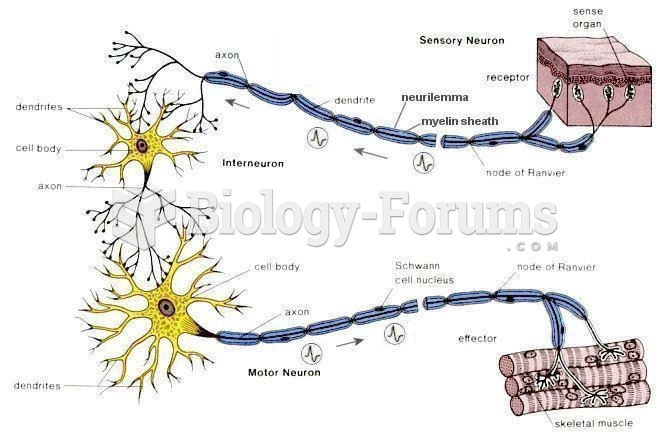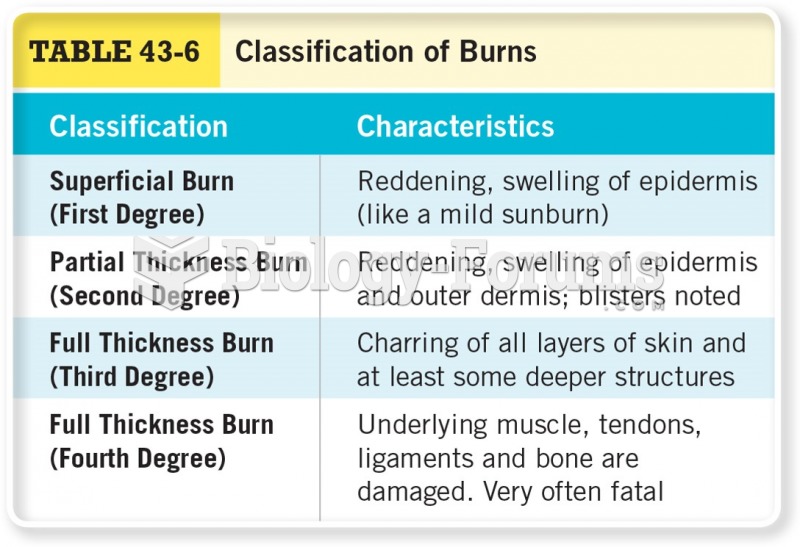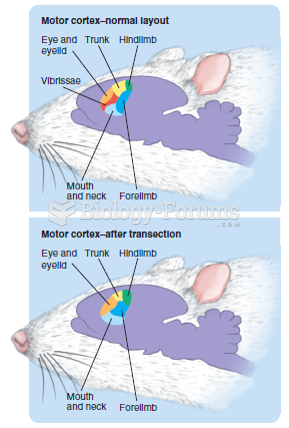|
|
|
People who have myopia, or nearsightedness, are not able to see objects at a distance but only up close. It occurs when the cornea is either curved too steeply, the eye is too long, or both. This condition is progressive and worsens with time. More than 100 million people in the United States are nearsighted, but only 20% of those are born with the condition. Diet, eye exercise, drug therapy, and corrective lenses can all help manage nearsightedness.
The immune system needs 9.5 hours of sleep in total darkness to recharge completely.
Eat fiber! A diet high in fiber can help lower cholesterol levels by as much as 10%.
In 1864, the first barbiturate (barbituric acid) was synthesized.
Medication errors are more common among seriously ill patients than with those with minor conditions.







